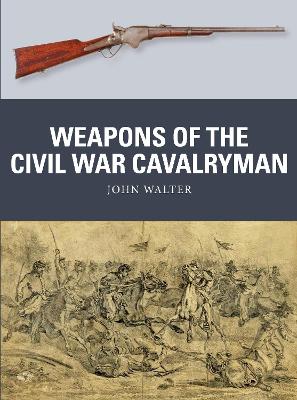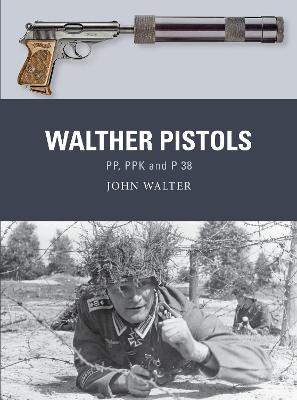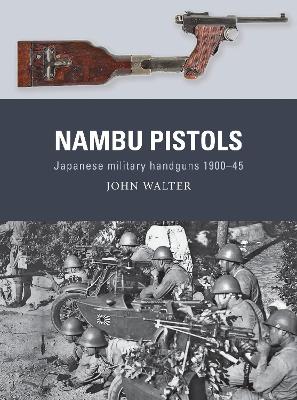Weapon
1 primary work • 4 total works
Book 71
Created by a long-forgotten Austrian nobleman, Adolf Odkolek von Augezd, the air-cooled Hotchkiss machine gun was the first to function effectively by tapping propellant gas from the bore as the gun fired. Although the Hotchkiss would be overshadowed by the water-cooled Maxim and Vickers Guns, it proved its effectiveness during the Russo-Japanese War. The gun, quirky though it was, was successful enough to persuade Laurence Benet and Henri Mercie to develop the Modele Portative: a man-portable version which, it was hoped, could move with infantrymen as they advanced. Later mounted on tanks and aircraft, it became the first automatic weapon to obtain a 'kill' in aerial combat.
Though it served the French and US armies during World War I (and also the British in areas where French and British units fought alongside each other), the Odkolek-Hotchkiss system was to have its longest-term effect in Japan. Here, a succession of derivatives found favour in theatres of operations in which water-cooling could be more of a liability than an asset. When US forces landed on Saipan, Guam and Iwo Jima, battling their way from island to island across the Pacific, it was the 'Woodpecker' - the Type 92 Hotchkiss, with its characteristically slow rate of fire - which cut swathes through their ranks. Supported by contemporary photographs and full-colour illustrations, this title explores the exciting and eventful history of the first successful gas-operated machine gun.
Though it served the French and US armies during World War I (and also the British in areas where French and British units fought alongside each other), the Odkolek-Hotchkiss system was to have its longest-term effect in Japan. Here, a succession of derivatives found favour in theatres of operations in which water-cooling could be more of a liability than an asset. When US forces landed on Saipan, Guam and Iwo Jima, battling their way from island to island across the Pacific, it was the 'Woodpecker' - the Type 92 Hotchkiss, with its characteristically slow rate of fire - which cut swathes through their ranks. Supported by contemporary photographs and full-colour illustrations, this title explores the exciting and eventful history of the first successful gas-operated machine gun.
During the American Civil War, the mounted soldiers fighting on both sides of the conflict carried a wide array of weapons, from sabers and lances to carbines, revolvers, and other firearms. Though some sections of the cavalry placed their trust in the sabre, the advent of viable breechloading carbines -- especially repeaters such as the Spencer -- was to transform warfare within little more than a decade of General Lee's final surrender at Appomattox. However, output struggled to keep up with unprecedented demands on manufacturing technology and distribution in areas where communication was difficult and in states whose primary aim was to equip their own men rather than contribute to the arming of Federal or Confederate regiments. In addition, the almost unparalleled losses of men and equipment ensured that almost any firearm, effectual or not, was pressed into service. Consequently, the sheer variety of weaponry carried reflected the mounted soldiers' various roles in different theatres of operation, but also the availability -- or otherwise -- of weapons, notably on the Confederate side.
Fully illustrated, this study assesses the effectiveness of the many different weapons arming the Civil War cavalryman and analyses the strengths and weaknesses of the decisions made after 1865 concerning the armament of the US cavalry.
Fully illustrated, this study assesses the effectiveness of the many different weapons arming the Civil War cavalryman and analyses the strengths and weaknesses of the decisions made after 1865 concerning the armament of the US cavalry.
While the PP and PPK were intended for police work, the Walther P 38 was produced for the Germany military; all three pistols have garnered a formidable international reputation since the 1930s.
The innovative Walther PP (Polizeipistole), a double-action semi-automatic pistol intended for the law-enforcement market, became available in 1929 and went on to arm the police of several European countries in the 1930s. Its smaller cousin the PPK, more readily concealed for undercover work but with reduced magazine capacity, was produced from 1931. Intended to replace the P 08 Luger, the Walther P 38 was issued from 1940 and equipped the armed forces of Germany and other countries during and after World War II, but never entirely replaced the Luger in German service. All three pistols went on to have lengthy and varied service across the world after 1945. Both the PP and the PPK remain in production today, while the P 38 re-emerged as the P1 and equipped West German forces from 1963 until 2004, when it was replaced by the P8. In this study, noted authority John Walter assesses the origins, development, use and legacy of these three high-profile semi-automatic pistols, alongside other Walther variants, such as the tiny .25 ACP Modell 9.
The innovative Walther PP (Polizeipistole), a double-action semi-automatic pistol intended for the law-enforcement market, became available in 1929 and went on to arm the police of several European countries in the 1930s. Its smaller cousin the PPK, more readily concealed for undercover work but with reduced magazine capacity, was produced from 1931. Intended to replace the P 08 Luger, the Walther P 38 was issued from 1940 and equipped the armed forces of Germany and other countries during and after World War II, but never entirely replaced the Luger in German service. All three pistols went on to have lengthy and varied service across the world after 1945. Both the PP and the PPK remain in production today, while the P 38 re-emerged as the P1 and equipped West German forces from 1963 until 2004, when it was replaced by the P8. In this study, noted authority John Walter assesses the origins, development, use and legacy of these three high-profile semi-automatic pistols, alongside other Walther variants, such as the tiny .25 ACP Modell 9.



